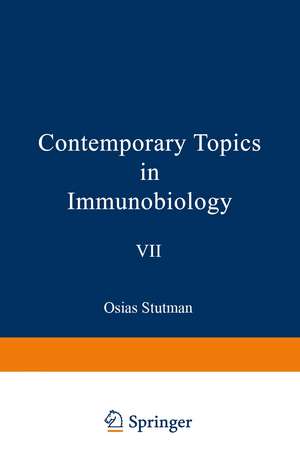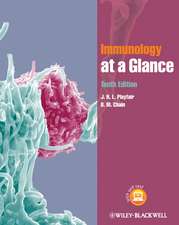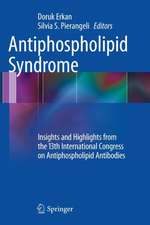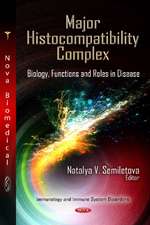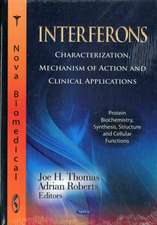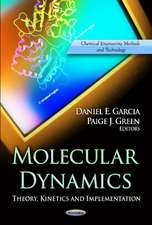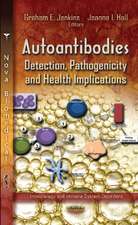Contemporary Topics in Immunobiology, Vol. 7:T Cells: Contemporary topics in immunobiology, cartea 7
Editat de Osis Stutmanen Limba Engleză Paperback – 26 apr 2012
Preț: 373.68 lei
Preț vechi: 393.35 lei
-5% Nou
Puncte Express: 561
Preț estimativ în valută:
71.51€ • 74.57$ • 59.43£
71.51€ • 74.57$ • 59.43£
Carte tipărită la comandă
Livrare economică 21 martie-04 aprilie
Preluare comenzi: 021 569.72.76
Specificații
ISBN-13: 9781468430561
ISBN-10: 1468430564
Pagini: 404
Ilustrații: XVI, 386 p.
Dimensiuni: 152 x 229 x 21 mm
Greutate: 0.54 kg
Ediția:Softcover reprint of the original 1st ed. 1977
Editura: Springer Us
Colecția Springer
Seria Contemporary topics in immunobiology
Locul publicării:New York, NY, United States
ISBN-10: 1468430564
Pagini: 404
Ilustrații: XVI, 386 p.
Dimensiuni: 152 x 229 x 21 mm
Greutate: 0.54 kg
Ediția:Softcover reprint of the original 1st ed. 1977
Editura: Springer Us
Colecția Springer
Seria Contemporary topics in immunobiology
Locul publicării:New York, NY, United States
Public țintă
ResearchCuprins
1 Two Main Features of T-Cell Development: Thymus Traffic and Postthymic Maturation.- I. Introduction.- II. Postthymic Precursor Cells.- III. Traffic.- IV. Epilogue.- V. References.- 2 Regulation of the Immune Response by T-Cell Subclasses.- I. Introduction.- II. Properties of Three Major T-Cell Subclasses.- III. Possible Mechanisms of TC/S Suppression.- IV. Definition of Other (Non-T) Lymphocyte Subclasses Expressing Distinctive Cell-Surface Components.- V. References.- 3 Antigen Receptors of T Helper Cells.- I. Introduction.- II. Functional Specificity and Heterogeneity of Helper-T-Cell Receptors.- III. Idiotypic Properties of Helper and Suppressor T-Cell Receptors.- IV. Ir Gene Control of Specific Helper Function.- V. Properties of Isolated Antigen-Binding Receptors of Putative T-Cell Origin.- VI. Discussion.- VII. References.- 4 Antigen-Binding, Idiotypic T-Lymphocyte Receptors.- I. Introduction.- II. Methods and Materials Used in the Induction and Analysis of Antiidiotypic Antibodies.- III. Induction and Characteristics of Antiidiotypic Antibodies Raised Against T- or B-Cell Receptors for Antigen.- IV. Inhibition of T-Cell Functions by Antiidiotypic Antibodies.- V. Direct Visualization of Idiotype-Positive T Lymphocytes Using Fluorescent Antibody Techniques, Autoradiography, or Electronmicroscopy Measurements.- VI. Specific Accumulation and Purification of Idiotype-Positive T Lymphocytes.- VII. Demonstration and Characteristics of Naturally Occurring, Idiotypic, Antigen-Binding Molecules Derived from T and B Lymphocytes and Present in Normal Serum.- VIII. Specific Transplantation Tolerance Resulting from Autoimmunity Against Naturally Occurring Idiotype-Positive Receptor Molecules..- IX. General Discussion.- X. References.- 5 Major Transplantation Antigens, Viruses, and Specificity of Surveillance T Cells.- I. Introduction.- II. Virus-Specific Cytotoxic T Cells in Vitro.- III. Restriction of Virus-Specific Effector-T-Cell Functions in Vivo by H-2K or H-2D.- IV. Analysis of the H-2 Compatibility Requirement for Cytolytic T-Cell Interactions.- V. Major Transplantation Antigens and Immunosurveillance.- VI. Conclusions.- VII. References.- 6 Significance of the Major Histocompatibility Complex As Assessed by T-Cell-Mediated Lympholysis Involving Syngeneic Stimulating Cells.- I. The Murine Major Histocompatibility Complex.- II. Requirement of Serologically Detectable Region Homology for Cytotoxicity in Chemically Modified Autologous Systems.- III. Role of H-2-Linked Immune Response Genes.- IV. Conclusions and Speculation.- V. References.- 7 T-Cell-Mediated Cytolysis: An Overview of Some Current Issues.- I. Introduction.- II. Stages in the Lytic Cycle.- III. Overview and Some Possible Future Directions.- IV. References.- 8 Mechanism of T-Cell-Mediated Cytolysis: The Lethal Hit Stage.- I. Introduction.- II. The Three Stages of T-Cell-Mediated Cytolysis.- III. Recognition.- IV. Lethal Hit.- V. Target-Cell Disintegration.- VI. Summary and Conclusions.- VII. References.- 9 Mechanism of Specific Tumor-Cell Lysis by Alloimmune T Lymphocytes: Resolution and Characterization of Discrete Steps in the Cellular Interaction.- I. Introduction.- II. Technical Considerations in the Assay of T-Lymphocyte-Mediate d Specific Lysis (TSL).- III. Resolution of TSL into Steps.- IV. Characteristics of Adhesion.- V. Characteristics of Programming for Lysis.- VI. Characteristics of Killer-Cell-Independent Lysis (KCIL).- VII. Sites of Action of Drugs Inhibiting TSL.- VIII. Concluding Remarks.- IX. References.- 10 Functional Analysis of Distinct Human T-Cell Subsets Bearing Unique Differentiation Antigens.- I. Introduction.- II. Surface Properties of Human Lymphocyte Subsets.- III. Methods for the Isolation of Human T Cells and Their Subsets.- IV. Functional Properties of Isolated Human Lymphocyte Subsets.- V. Conclusions.- VI. References.
